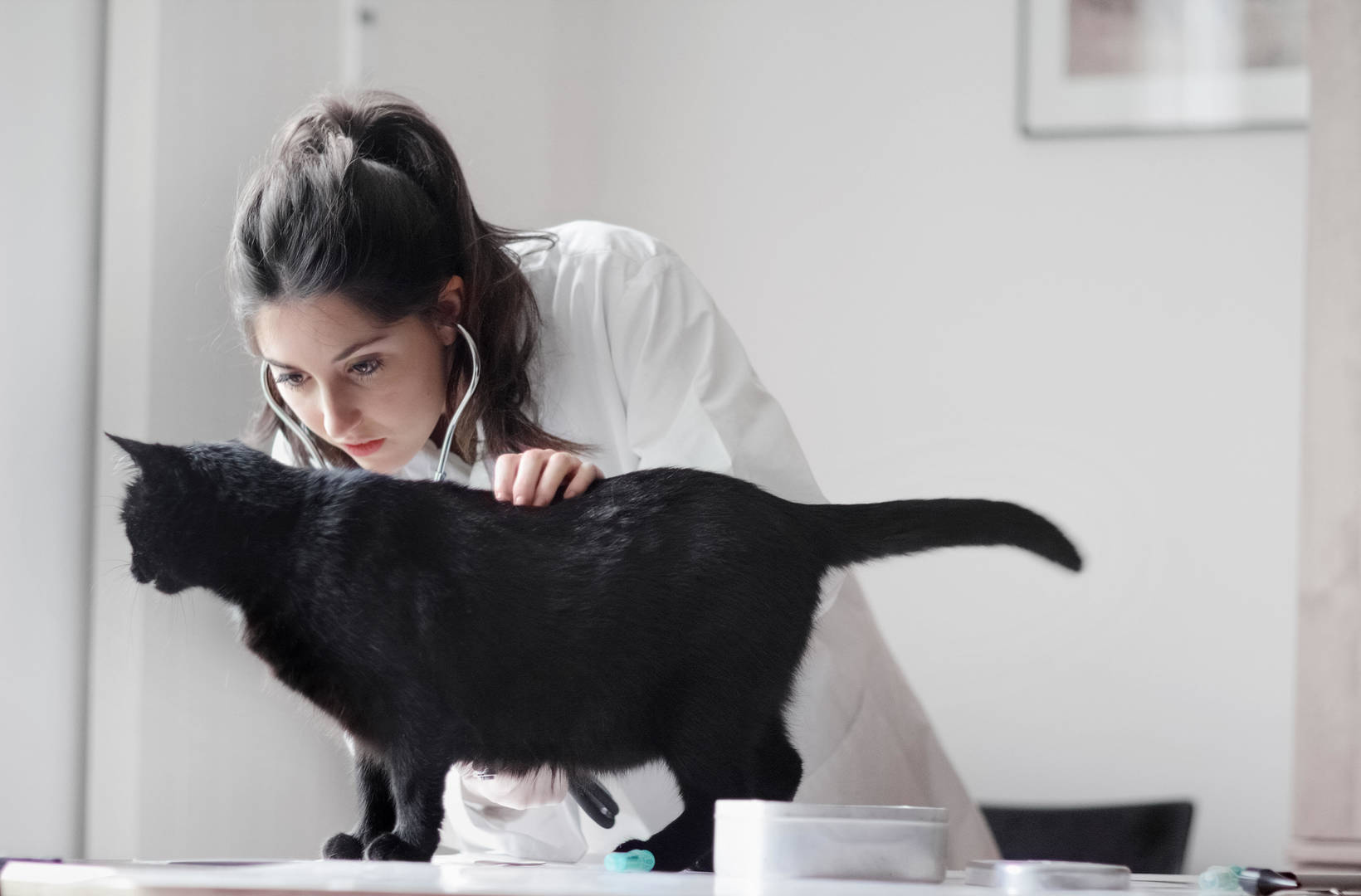Where are all the veterinary staff?
By MWI Animal Health

Burnout. Overwork. High turnover. Low morale. These are just some of the sentiments buzzing around animal health practices in 2023. Veterinary practices are having trouble filling open positions, with a nationwide average of 1.8 veterinarian job openings per employer. How can companion animal practices convince qualified applicants to choose their practice and entice them to stay?
For veterinarians, it's a job seeker's market. The hiring and retention challenges companion practices face are not the results of a pipeline problem. Enrollment in accredited veterinary schools in the United States rose 2.6 percent every year between 2011 and 2022, according to data from the American Association of Veterinary Medical Colleges. As of April 2022, there were over 13,000 DVM students in the United States.
However, the Bureau of Labor and Statistics predicts that by 2031, there will be between 15,000 and 18,000 unfilled veterinarian job openings. The demand for jobs will continue to outpace the supply.
Compensation as a recruitment tool
The American Veterinary Medical Association reports that in 2022, the nominal mean income for all veterinarians was $136,837, with those with more experience, and/or working in specialties, like emergency medicine, commanding more. The job seeker's market also compels add-ons like signing bonuses to sweeten the deal for candidates.
To attract a qualified veterinarian to your practice, then, the compensation must meet a high level. Yet beyond salary, there are other considerations that may entice a veterinarian to consider working at a particular practice. The American Animal Hospital Association (AAHA) found veterinarians are most likely to negotiate for more paid time off and a budget for continuing education when evaluating a job offer. In a poll conducted by Tannetje Crocker, DVM, of more than 1,000 veterinarians, 83 percent valued more PTO over a higher salary when searching for a job.
Student debt weighs many new graduates down, and that burden could influence the job offers they ultimately accept. Some practices have started offering student loan repayment assistance as a job perk to bring those new, Gen Z veterinarians on board. Sixty percent of the DVM class of 2026 entered veterinary school already in debt from their undergraduate education. In addition to that, median vet school tuition in the United States is $55,000 per year, so it's clear that these financial concerns weigh heavily on the next generation of employees.
Practices in underserved areas can market themselves to prospective employees by touting the Veterinary Medicine Loan Repayment Program. Sponsored by the USDA, the program gives veterinarians who agree to work for three years in a region deemed as having a veterinary practitioner shortage $25,000 per year to put toward their qualified educational loans.
What about veterinary techs?
Of course, veterinarians aren't the only staff members who keep companion practices running smoothly. The expertise of certified veterinary technicians and technologists is necessary, too; however, they aren't always used to their full potential, contributing to job dissatisfaction. According to a survey conducted by researchers at the University of Florida of 2,000 vet techs, 57 percent said there are medical tasks they have the qualifications to perform, yet their supervisor doesn't give them the opportunity.
Burnout is a real threat for veterinary technicians. About half of them leave the profession within the first five years, contributing to the continual staffing crisis.
Vet techs are feeling financial stress as well. In a 2022 survey of 1,886 vet techs by the National Association of Veterinary Technicians in America (NAVTA), the median annual salary was $45,700. More than one-third of survey respondents carry student debt, with an average of nearly $30,000. One-third is the same amount who reported holding a second job. When asked what they consider the most challenging aspect of the job, 39 percent named low salary. High turnover came in second, with 16 percent of responses. Fortunately, there are some avenues of help. The Veterinary Medicine Loan Repayment Program is available to qualified veterinary technicians.
Technology enables job satisfaction
Though it's impossible to eliminate all job stressors, companion veterinary practices can look for ways to keep employees engaged and — hopefully — increase staff retention rates.
How does your companion animal veterinary practice stack up to the competition? Does your software enable efficient client communications? Are you utilizing features like a retention calendar to encourage forward booking and save front desk staff time calling non-compliant pet owners? Do you have a branded app that lets clients request appointments and manage medication refills?
The American Veterinary Medical Association found veterinary professionals who considered their practice's technologies "good" or "excellent" were more likely to have high job satisfaction than those who ranked technologies as "fair" or "poor."
It's essential, then, to closely evaluate your tech stack and make sure it helps (not hinders) your staff's workflows. Creating automated processes will make onboarding new staff even easier. Then, they can get to the business of treating animals with even more speed and efficiency.
Companion animal practices can look for ways to keep employees engaged and increase staff retention.
Encourage breaks and 'creative schedules'
Software is great, but it's important to remember this is a people-powered industry. Having the best practice management software won't matter if disgruntled staff are using it.
One way to grow job satisfaction is to encourage staff to use their paid time off. Only 41 percent of vet techs reported using all their PTO in any given year. Staff need time away from the clinic to recharge and rest, both physically and mentally. According to the AAHA, more PTO is one of the items most often negotiated when accepting an offer.
Practice leadership can draft schedules that support paid time off, so workers don't feel they are leaving their co-workers in a lurch by taking much-needed time away. Leadership can also model this behavior by using their own PTO.
In addition to decreasing stress, creative scheduling can prove an effective recruitment and retention tool. Eighty percent of survey takers said they considered flexible scheduling when looking for a job. Additionally, 42 percent of veterinarians were willing to accept a lower salary to work three days per week. Companion practices could consider creative options, like scheduling workers in 10-to-12-hour shifts 3-to-4 days each week, with rotating Saturdays, to accommodate both staff and pet owners' needs.
Create a learning culture
Veterinary technicians report working directly with animals and feeling respected by bosses and colleagues increased their job satisfaction. For both techs and DVMs, company culture matters. Dr. Crocker's survey found 66 percent of veterinarians ranked it more important than compensation when choosing an employer.One way to create a strong culture is to foster veterinary team leadership, which is not necessarily management or ownership. Not every DVM aspires to become a practice owner, nor does every veterinary technician aspire to become a people manager, so it's important to encourage your staff to develop the professional skills that make the most sense for them. Do they want to learn a new skill? Do they want to take on a project outside of their normal scope? More veterinarians are negotiating for continuing education budgets when evaluating offers. Consider what your practice will offer in this area to entice the best and brightest to work for you.
Frequently checking the pulse of your veterinary team is a smart way to keep staff engaged. Performing engagement scoring within the practice, using the voice of the employee surveys, and other similar tools will provide benchmarks for growth. By asking the right questions, your practice can quantify the changes it has made and get the team to stop and think about how — or even if — it has improved. Take advantage of the opportunities to discuss engagement scoring at team meetings to help promote open discussion and psychological safety in the workplace.
Foster mental well-being
You know your colleagues — and maybe yourself — are struggling. We've all heard and empathized with the sobering stats on the mental health crises and suicide rates in the industry. The Merck Animal Health Veterinarian Wellbeing Study III and Veterinary Support Staff Study showed 59 percent of distressed veterinarians and 65 percent of distressed veterinary support needed mental health treatment in the past year but did not get it. Offering access to resources that support staff well-being, such as NOMV (see sidebar) or the VIN Foundation, is crucial to creating a safe, engaged, connected workforce.Other resources for veterinary staff include employee assistance programs, better known as EAPs. Employers offer these programs, which assist employees with challenges that could impact their well-being, free of charge to staff, as part of their benefits package. Workers can access free, confidential mental health assessments, counseling, referrals to therapists, online wellness resources, and more. EAPs don't report back on the specifics of employee engagement, protecting confidentiality.
For you, as the employer, the value is in promoting good mental health, and in turn, higher team engagement. Issues from personal lives can sometimes spill over into work, so providing a platform for staff to talk these through can prove beneficial. Remembering to publicize these groups is important considering that 26 percent of the people surveyed by Merck did not even know whether their employer offered an EAP.
As veterinary medicine continues to feel the aftershocks brought on by the pandemic and the rise in pet ownership in the United States, it's important for practice owners and managers to consider the people that drive companion animal practices. Then, creating a healthy work environment can only drive your clinic's reputation as a preferred place to work.
NOMV is here to help
NOMV's mission is to transform the status of mental wellness within the profession so veterinary professionals can survive and thrive through education, resources, and support.
- Peer support. NOMV offers online support via our Facebook forums (Not One More Vet, Not One More Vet Support Staff) and anonymously via Lifeboat. NOMV also offers in-person support via local chapters. This program is continuously growing to expand into new areas.
- Advocates. NOMV Advocates provide quarterly outreach in their local communities and prepare care packages for veterinary professionals experiencing a difficult time.
- Student support and mentorship. Starting this year, NOMV is forming chapters at veterinary schools,
Clear Blueprint. Inspire a mentally healthy culture within the veterinary profession by energizing the compassionate transformation of workplaces with actionable resources and earn a mentally healthy workplace certification for your clinic. - Resources. NOMV offers financial support and resources to individuals and clinics in need via our Resource Committee.
Education. NOMV offers clinics and organizations access to mental health presentations. NOMV is also growing its educational content on the NOMV website.
How can I support NOMV?
- Donate/Sponsor: nomv.org/donate
- Volunteer: nomv.org/volunteers
- Shop: shop.nomv.org
- Race: nomv.org/race





